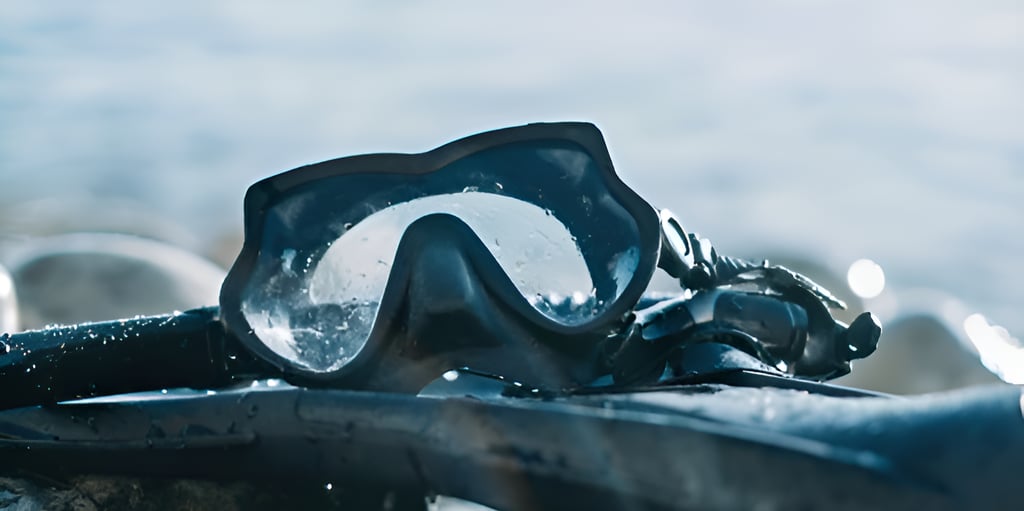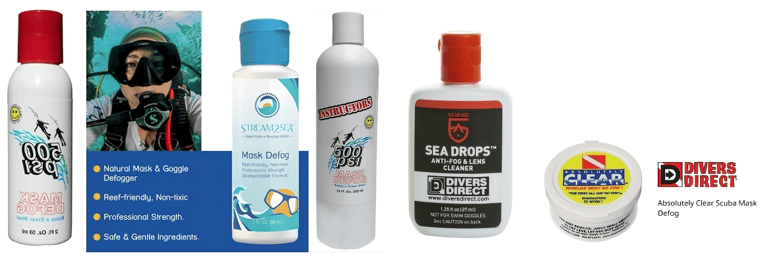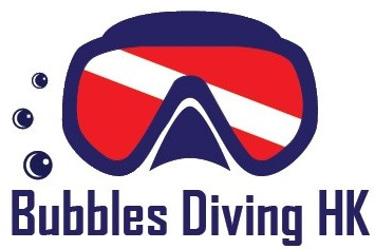Defogging Your Diving Mask: A Comprehensive Guide
How to defog you new mask
BubblesdivingHK
7/14/20255 min read


Understanding Mask Defogging
Defogging your diving mask is a critical step for achieving clear and unobstructed vision while underwater. New diving masks commonly present a fogging issue, which can significantly hinder visibility and overall diving experience. This phenomenon occurs as a result of temperature differentials between the inside and outside of the mask, coupled with the natural moisture present in the air we exhale. When these factors come together, condensation forms on the internal surface of the lens, causing fog that obstructs sight.
The science behind fog formation begins with the principles of thermodynamics. When warm air, laden with moisture, makes contact with the cooler mask surface, the air cools down, resulting in the moisture condensing and forming tiny water droplets. These droplets scatter light, leading to a cloudy appearance and reduced clarity. Understanding this concept is essential for divers, as it emphasizes the need for effective defogging methods.
Proper preparation and maintenance of your diving mask are equally important in combating fogging. Many divers experience fogging issues when utilizing a new mask that has not been adequately treated. Manufacturers often use silicone in the production process, which can leave a residue on the lens that contributes to fogging. To ensure optimal performance, divers should clean their masks with a mild abrasive, such as toothpaste, or a specialized mask cleaner, prior to their first use. This process helps remove any manufacturing residue, thereby improving visibility.
Additionally, applying a defogging agent or even simple household items like saliva can greatly enhance the mask's performance regarding fog prevention. By incorporating these practices, divers can maximize their underwater experience and minimize interruptions caused by visibility issues. Understanding the importance of defogging and proper mask care is a fundamental aspect of effective diving preparation.
Preparing Your New Diving Mask
When acquiring a new diving mask, it is essential to prepare it properly before use. The initial cleaning process plays a vital role in ensuring optimal visibility and comfort underwater. One of the primary purposes of this preparation is to eliminate any manufacturing residues, such as silicone, oils, or other contaminants that may have settled on the lens during production.
The first step in preparing your mask is to wash it with warm, soapy water. Utilizing a mild dish soap is advisable as it effectively removes any oils without causing damage to the materials. Start by gently scrubbing the exterior and interior surfaces with your fingers or a soft cloth, paying special attention to the lens and skirt areas, since contaminants are often more concentrated there.
After thoroughly cleaning the mask, the next crucial step is to rinse it with clean, warm water. This action is imperative as it removes any remaining soap and residues. Rinse the mask multiple times to ensure that no soap remains, as this can cause visibility issues when diving. It is recommended to let the mask air dry completely before applying any anti-fog treatments or storing it away.
Additionally, some divers may choose to use a silicone-free toothpaste to further prepare the mask. Applying a small amount onto the lenses and using a soft cloth to polish them can help prevent fogging. However, this step is optional and should be undertaken with caution, ensuring the toothpaste does not contain any abrasive materials that could scratch the lens.
In summary, properly preparing your new diving mask is crucial for achieving a clear underwater view. By following these cleaning steps and ensuring thorough rinsing, you will enhance your diving experience and prolong the mask's lifespan.
Defogging Techniques: Toothpaste vs. Lighter
Defogging a diving mask is crucial to ensure clear visibility underwater, and divers often explore various methods to achieve optimal clarity. Two popular techniques include using toothpaste and employing a lighter. Each method comes with its own set of advantages and disadvantages, which merits a detailed comparison.
Toothpaste is a widely recommended option for defogging diving masks. The process is simple: apply a small amount of non-abrasive toothpaste to the inner surface of the mask, gently buff it in with a soft cloth, and then rinse thoroughly with warm water. This method effectively removes residues that cause fogging and provides a thin protective layer that reduces condensation. The primary advantage of toothpaste is its accessibility and low cost. However, the effectiveness of this technique can depend on the type of mask material; some silicone masks may not respond as well to toothpaste applications. For optimal results, it’s best to let the toothpaste sit on the mask overnight before rinsing.
On the other hand, using a lighter to defog a diving mask is a quick and effective alternative. This method involves cautiously applying the flame from the lighter to the mask's lens to burn off any residual coatings that may promote fogging. Care must be taken to ensure the lens does not overheat or become damaged. The advantage of this technique is its immediacy; divers can prepare their masks instantly before a dive. However, the lighter method is more suitable for established divers familiar with their equipment, as improper use could lead to irreversible damage.
In deciding between these two techniques, personal preference and mask material play a significant role. For those seeking a long-lasting solution with minimal risk of damage, toothpaste may be the better choice. Conversely, for divers in need of quick preparation, a lighter may serve well. Understanding the attributes of each method can enhance the diving experience, ensuring safety and enjoyment.
Choosing the Right Defogger: Options and Budget
When it comes to defogging your diving mask, understanding the variety of available solutions can make a significant difference in your underwater experience. A range of options exists, from specialized synthetic defoggers to natural alternatives and affordable DIY solutions. Each type of defogger boasts unique characteristics that may suit different preferences, diving conditions, and budgets.
Synthetic defoggers typically offer longevity and efficiency. These products are specially formulated to prevent fogging and are designed for frequent divers. Brands often market their items as highly effective, although the price points can vary significantly. For instance, specialized sprays may cost more but could provide a reliable barrier against moisture accumulation. If you dive regularly, investing in a high-quality synthetic defogger may ultimately enhance your diving experience.
On the other hand, natural alternatives offer an eco-friendly approach to defogging your diving mask. Common ingredients for these solutions include baby shampoo or diluted dish soap. These items are cost-effective and widely available, making them a popular choice among budget-conscious divers. While they might not last as long as commercial products, they can serve adequately for occasional diving adventures. It’s essential, however, to ensure that these substances are thoroughly rinsed off before use to avoid irritation.
The DIY route presents another viable option, often utilizing common household items like vinegar or lemon juice. These natural substances can help mitigate fogging effectively and are easily accessible. To implement this method, simply apply a small amount to the inner lens and rinse it off. Although this can be a practical solution, divers should be mindful of the potential for residue that could impair visibility if not properly cleaned.
Ultimately, choosing the right defogger depends on various factors, including budget, frequency of diving, and the type of mask you own. By considering these aspects, divers can select an effective defogging solution that meets their specific needs.




Contacts
Whatsapp: +852 6200 6701 (Primary) Whatsapp: +852 6904 1892
bubblesdiving.hk@hotmail.com
Location: Kowloon, Hong Kong
Bubbles Diving HK©2025
